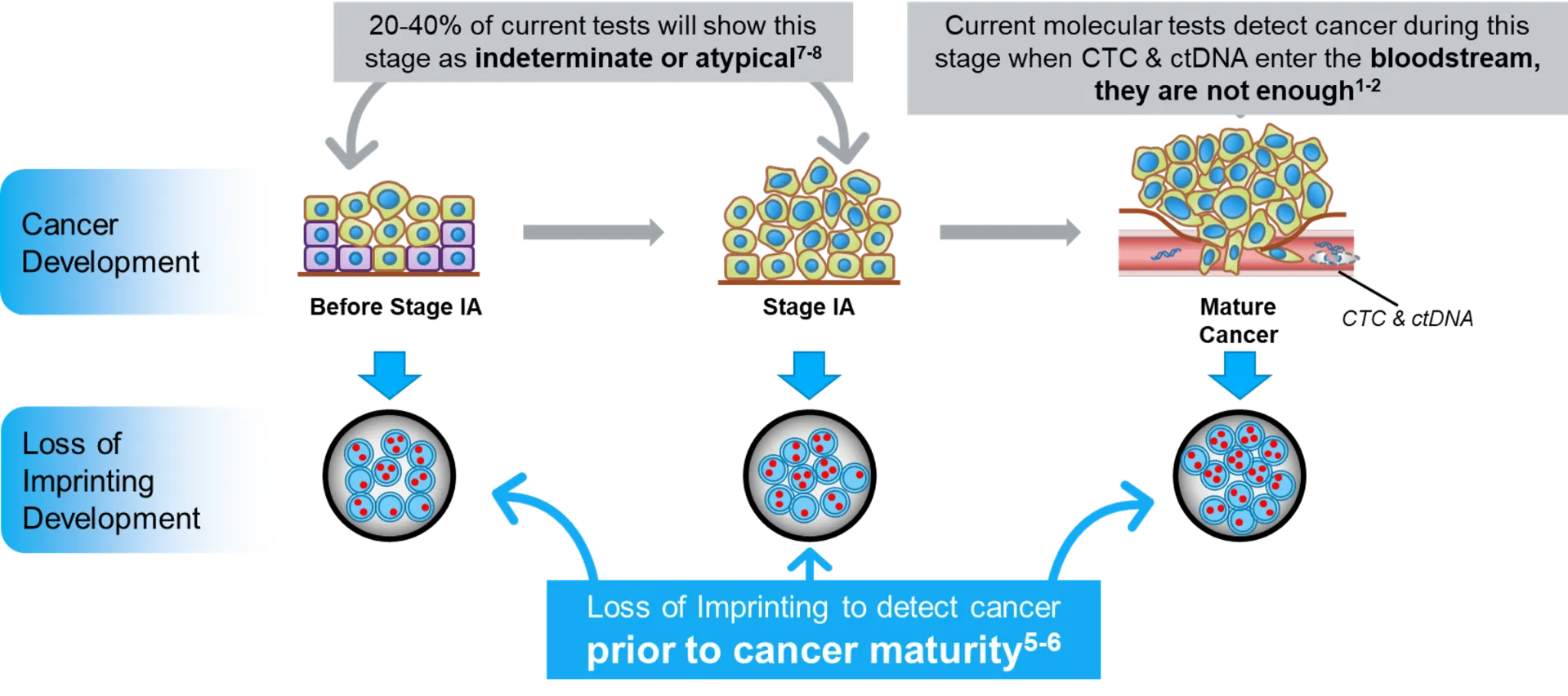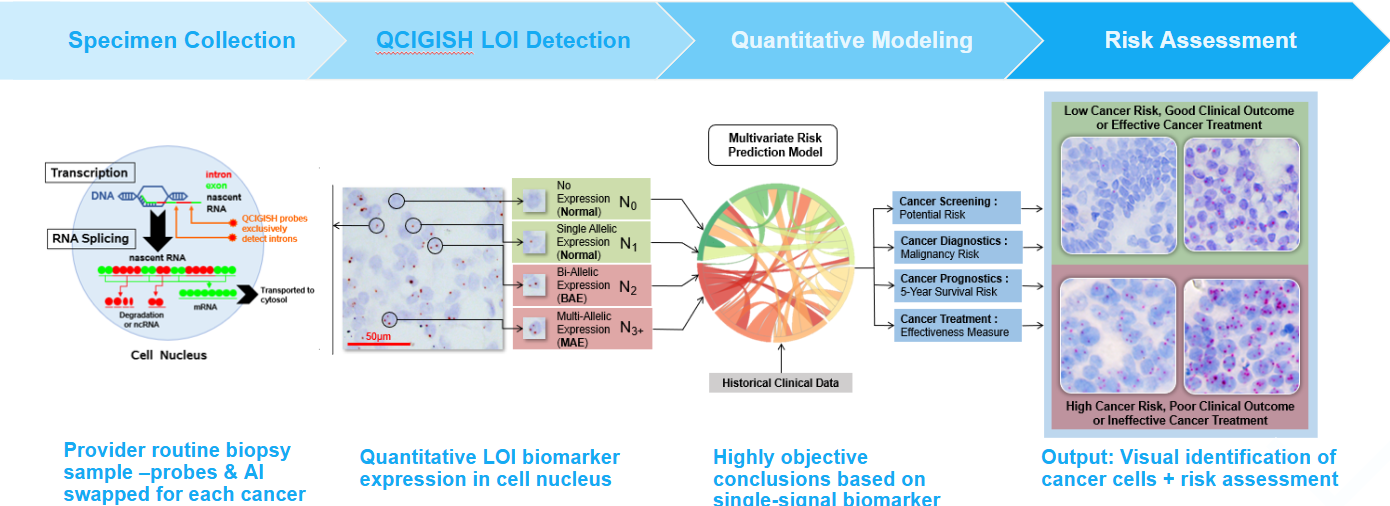
Overview of QCIGISH
QCIGISH (Quantitative Chromogenic Imprinted Gene In-Situ Hybridization)
is an advanced molecular diagnostic platform that detects early, cancer-specific epigenetic alterations at the single-cell level. QCIGISH directly visualizes the Loss of Imprinting (LOI) by targeting nascent RNA in the cell nucleus and uses machine learning algorithms to acurately identify early stage cancers before they spread.Why Loss of Imprinting is Better Than Other Biomarkers
Unlike traditional biomarkers, LOI offers several key advantages in early cancer detection

Early Detection
LOI provides a distinct signal of malignancy in cells at an earlier stage, making it effective even in early-stage cancer, where other biomarkers may fail.
Visual and Quantitative
QCIGISH can visualize LOI at the cellular level for quantitative analysis, providing a more precise and reliable result.
No Genetic Material Dependency
Many tests rely on ctDNA or CTCs, which are not always present in the early stages of cancer. LOI allows detection before these markers appear.
Powered by AI for Objectivity & Precision
Our proprietary machine learning models pair LOI detection with quantitative pattern recognition, giving pathologists:
• Objective risk scores grounded in biology, with reduced noise and high reliability
• Visual overlays that build trust in results
• Accuracy up to 95% in pre-clinical retrospective and prospective validation studies
How QCIGISH Works
The QCIGISH test involves a simple biopsy collection from a suspected tumor site. Once the sample is processed in our lab, QCIGISH technology visually identifies LOI expression in the cell nuclei. Our machine learning model, trained on extensive datasets of LOI expression, quantitatively analyzes this data to produce a risk assessment score. This score helps pathologists make a more informed and objective diagnosis, even in early cancer stages.
Comparison to Other Epigenetic Tests
QCIGISH outperforms other epigenetic tests by offering precise, cellular-level detection of LOI in a broader range of tissues, including biopsy samples, urine, and cervical smears. While other tests, like ctDNA or CTC-based methods, may struggle to detect early-stage cancers, QCIGISH provides a clear visual marker of malignancy, enabling earlier intervention and better patient outcomes.


